Table of Contents
- Introduction
- Why Measure Pepper Heat?
- Understanding Scoville Heat Units (SHU)
- Tools for Measuring Pepper Heat
- Pepper Heat Comparison Chart
- How to Control Pepper Heat in Cooking
- Buying Guide for Pepper Heat Measurement Tools
- Cooking Tips for Different Heat Levels
- Frequently Asked Questions
- Conclusion
Introduction
When people search for "scale hot peppers," they typically mean understanding how to measure pepper heat using the Scoville scale. The Scoville scale is the standard measurement for the heat level of chili peppers, based on capsaicin content. This guide explains exactly how to measure, compare, and control pepper heat for perfect cooking results.
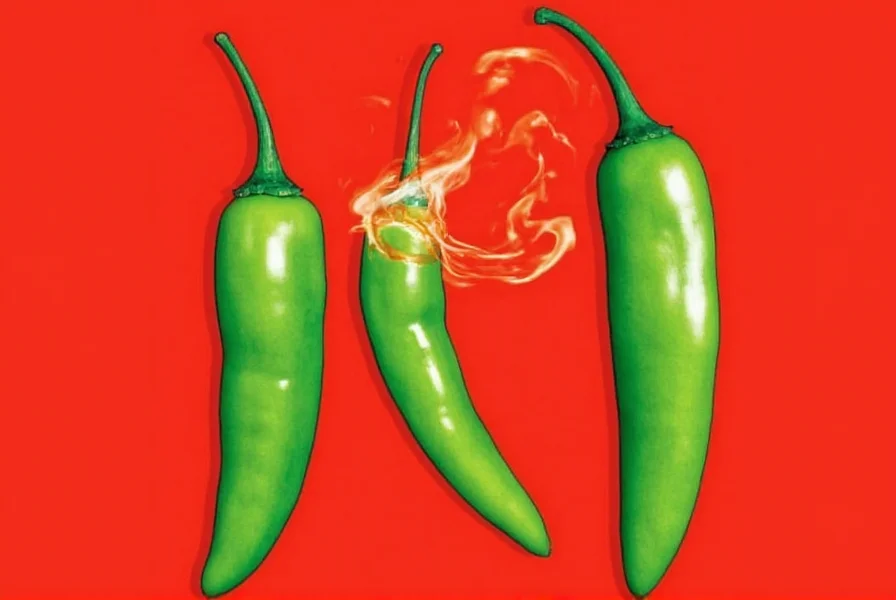
Why Measure Pepper Heat?
Spiciness isn't just about turning up the heat — it's about control. Measuring pepper heat allows you to match their heat level to your recipe, audience, or personal preference. Imagine serving a dish to someone who can't handle spice or trying to impress a hot sauce connoisseur with a mild kick. That's where measuring heat becomes crucial.
Moreover, measuring heat helps in consistency — especially if you're making sauces, salsas, or spice blends that need a uniform flavor profile every time. Understanding the heat potential of different peppers lets you mix, match, and master your own recipes.
Understanding Scoville Heat Units (SHU)
When we talk about measuring pepper heat, we're really talking about measuring their capsaicin content — the compound responsible for spiciness. The key measurement used is:
- SHU (Scoville Heat Units): The classic measurement developed by Wilbur Scoville in 1912. It measures how much sugar water is needed to dilute the pepper extract until the heat is no longer detectable. Modern methods use high-performance liquid chromatography (HPLC) to measure the exact amount of capsaicinoids, but the results are still reported in SHU.
The higher the SHU, the hotter the pepper. Knowing these numbers helps you decide which peppers to use when you want to add a whisper of warmth or a full-blown inferno to your dishes.
Tools for Measuring Pepper Heat
You don't have to be a chemist to measure pepper heat — but having the right tools definitely helps. Here are some must-haves:
- Scoville Scale Reference Chart – Your go-to guide for comparing pepper heat levels.
- Heat-resistant gloves – Protects your hands from capsaicin burns during handling.
- Pepper grinders/mills – For precise grinding of dried chilies into powder.
- Digital spice scales – Weighing peppers ensures consistency across batches.
- Infusion kits – Great for infusing oils, spirits, or butter with controlled heat.
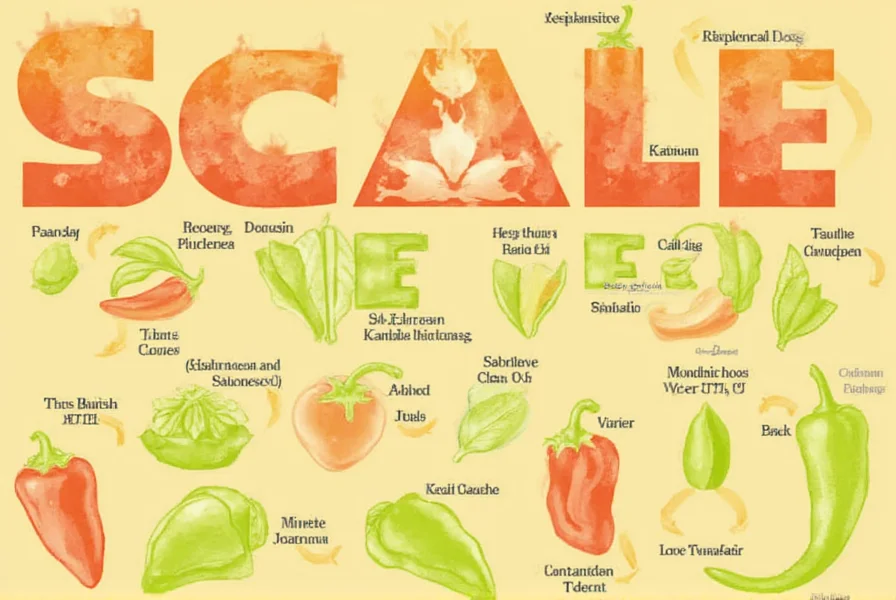
Pepper Heat Comparison Chart
| Pepper Name | Heat Level (SHU) | Common Uses | Best For |
|---|---|---|---|
| Bell Pepper | 0 | Sandwiches, stir-fries | Mild eaters, colorful garnishes |
| Jalapeño | 2,500–8,000 | Salsas, nachos, poppers | Casual spice lovers |
| Hatch Green Chile | 1,000–8,000 | Southwest dishes, roasting | Roasted flavor fans |
| Serrano | 10,000–23,000 | Pico de gallo, soups | Home cooks seeking zing |
| Habanero | 100,000–350,000 | Hot sauces, jerk seasoning | Heat-seekers |
| Ghost Pepper | ~1,000,000 | Extreme heat challenges | Daredevils only |
| Carolina Reaper | 1,400,000–2,200,000 | Contests, novelty items | World record seekers |
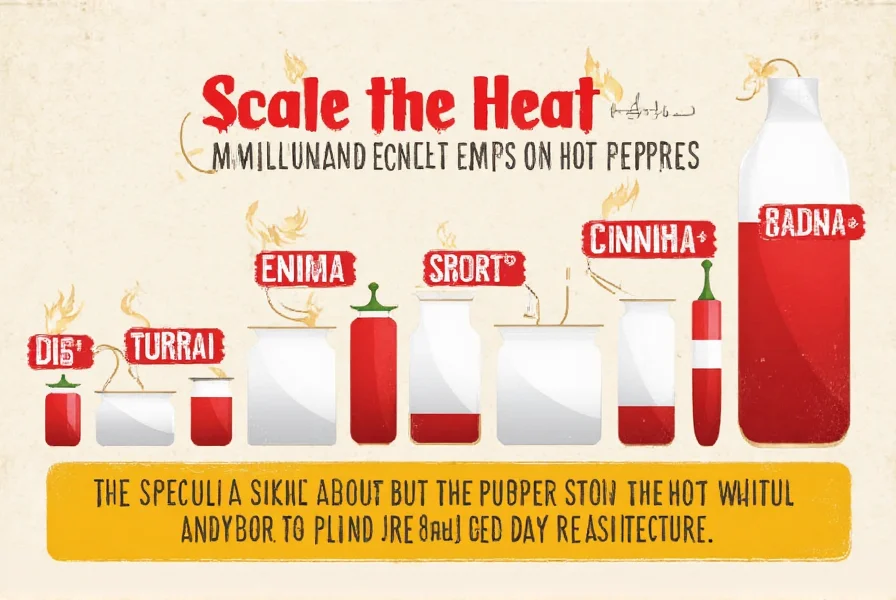
How to Control Pepper Heat in Cooking
Measuring pepper heat isn't just about raw numbers — it's also about technique. There are three fundamental methods for accurate heat control when working with hot peppers:
Method 1: Understanding and Applying the Scoville Scale
Before you start cooking, identify where your pepper falls on the Scoville scale. This knowledge helps you select appropriate peppers for your desired heat level and prevents accidental over-spicing. Always start with less than you think you need—you can add more heat, but you can't remove it!
Method 2: Precise Measurement and Preparation Techniques
Weigh peppers using a digital scale rather than estimating by volume. Remove seeds and membranes where capsaicin concentration is highest. For extreme precision, consider making a pepper extract that you can add drop by drop to your dish.
Method 3: Strategic Heat Balancing in Recipes
Incorporate balancing ingredients like dairy, sugar, or acid to counteract excessive heat. Add hot peppers early for milder flavor integration or late for more pronounced heat. Remember that cooking can sometimes intensify heat initially before mellowing it over time.
Here are additional practical tips to help you manage heat like a culinary scientist:
- Remove the seeds and ribs – Capsaicin is concentrated there, so removing them reduces overall heat.
- Use vinegar-based marinades – Helps tame the heat while enhancing flavor.
- Add acid or dairy – Lime juice, yogurt, or sour cream can balance out fiery flavors.
- Soak dried peppers – Softens them before blending and extracts flavor better.
- Control the grind – Finer powders release more capsaicin than coarsely ground peppers.
Buying Guide for Pepper Heat Measurement Tools
| Tool | Features | Advantages | Best Use Case | Who Needs It |
|---|---|---|---|---|
| OXO Good Grips Digital Scale | Precision weighing up to 0.1g, tare function | Ensures consistent pepper measurements | Repeating recipes or commercial use | Home cooks & chefs |
| Escali Primo Spice Scale | Compact design, auto-off feature | Ideal for small kitchens or travel | Weighing spices or small quantities | Spice enthusiasts on the go |
| KitchenAid Adjustable Pepper Mill | Adjustable grind settings | Customize spice intensity | Using whole dried chilies | Chefs and gourmet cooks |
| Wusthof Classic Chili Knife | Ergonomic handle, ultra-sharp blade | Safe and efficient slicing | Handling fresh peppers | Anyone working with fresh chilies |
| Nitrofur Pepper Infuser Kit | Stainless steel infusion chamber | Controlled heat extraction | Creating infused oils or liquors | Homebrewers and bartenders |
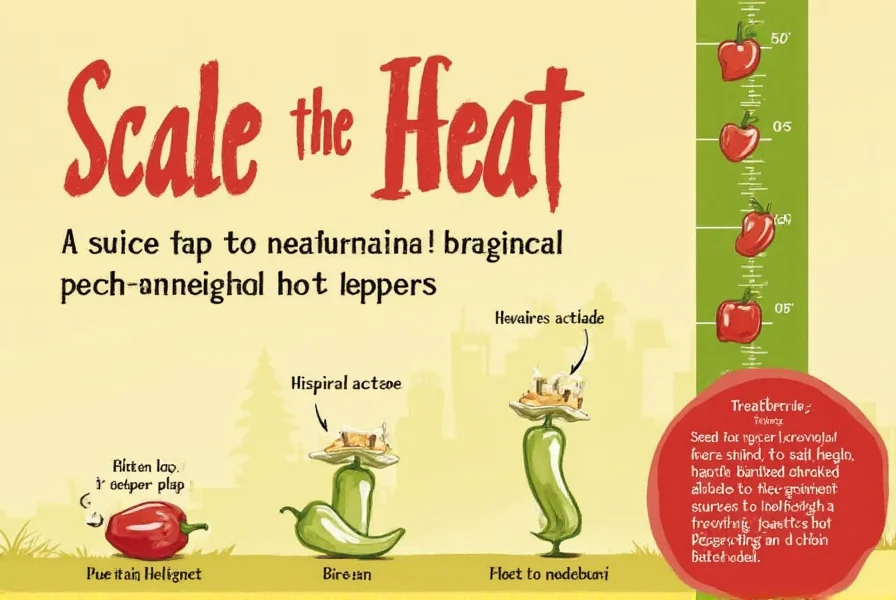
Cooking Tips for Different Heat Levels
Now that you've got the tools and knowledge, let's get cooking! Here's how to work with peppers at different heat levels:
- Mild Peppers (0–5,000 SHU) – Bell peppers, poblanos. Use raw in salads, roasted for stuffing, or as a base for sauces needing subtle spice.
- Medium Peppers (5,000–50,000 SHU) – Jalapeños, serranos. Perfect for everyday cooking, pickling, or adding zip to soups and dips.
- Hot Peppers (50,000–300,000 SHU) – Habaneros, Thai chiles. Best for sauces, marinades, and dishes meant to pack a punch. Use sparingly!
- Extreme Heat (300,000+ SHU) – Ghost peppers, Carolina Reapers. Only for experienced users or specialty recipes. Handle with care and always wear gloves.
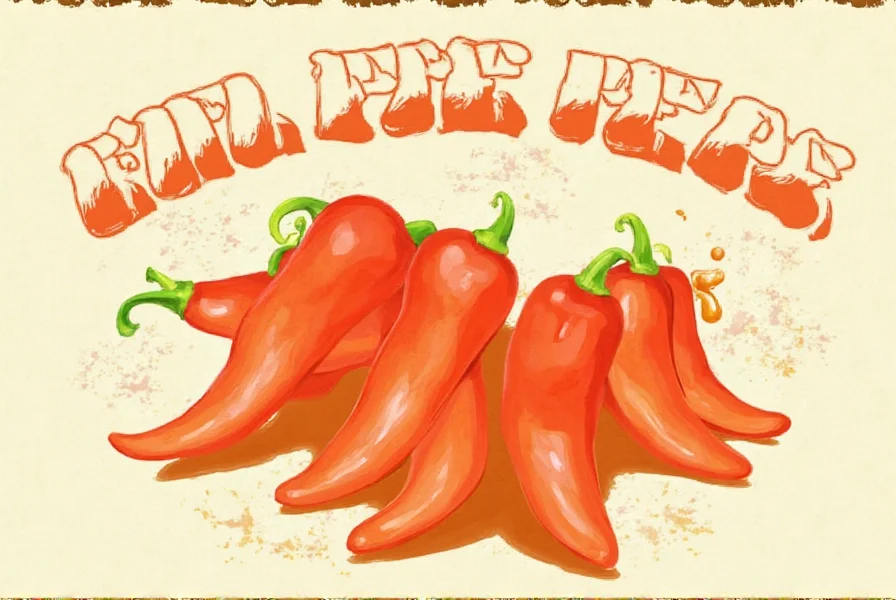
Frequently Asked Questions
What does "measuring pepper heat" actually mean in cooking?
Measuring pepper heat refers to the process of quantifying the capsaicin content in chili peppers to determine their spiciness level. This involves using the Scoville scale as a standard measurement system to ensure precise control over heat intensity in recipes, allowing for consistent flavor profiles and safe spice management.
How can I reduce the heat of a pepper without losing flavor?
To reduce heat while preserving flavor, remove only the seeds and white ribs (placenta) where most capsaicin is concentrated, leaving the flavorful flesh intact. Alternatively, you can blanch peppers briefly in boiling water, use vinegar-based preparations, or add complementary ingredients like citrus, honey, or dairy that balance heat without masking pepper flavor.
What's the most accurate way to measure pepper heat for recipes?
The most accurate method combines three approaches: 1) Using a digital scale to weigh peppers precisely rather than estimating by count or volume, 2) Understanding the specific Scoville range for your pepper variety (which can vary based on growing conditions), and 3) Creating a standardized pepper extract that you can add drop by drop to achieve exact heat levels. For professional applications, HPLC testing provides the most precise measurement of capsaicin content.
Can I substitute one hot pepper for another in recipes?
Yes, but with caution. When substituting, consider both heat level (SHU) and flavor profile. For example, habaneros (100,000-350,000 SHU) are significantly hotter than serranos (10,000-23,000 SHU), so you'd need much less habanero to achieve similar heat. A general substitution rule: 1 jalapeño ≈ 1/2 serrano ≈ 1/8 habanero by volume. Always start with less than you think you need when substituting hotter peppers.
How do I handle extremely hot peppers safely?
When handling extremely hot peppers (300,000+ SHU), always wear nitrile gloves (latex doesn't protect against capsaicin), work in a well-ventilated area, and avoid touching your face. Use separate cutting boards and knives that you can clean thoroughly afterward. If you get capsaicin on your skin, wash with soap and cold water (not hot, which opens pores), or use milk or oil to dissolve the compound before washing. Never rub your eyes after handling hot peppers!
Does cooking affect pepper heat levels?
Cooking affects pepper heat in complex ways. Initially, heat may seem more intense as capsaicin is released, but prolonged cooking can break down some capsaicin compounds, mellowing the heat. Acidic ingredients can increase perceived heat, while dairy and fats help distribute capsaicin more evenly. Roasting peppers often enhances their natural sweetness while slightly reducing perceived heat. The timing of adding peppers to your dish (early vs. late in cooking) significantly impacts final heat level.
Conclusion
Learning how to measure pepper heat opens up a flavorful world of possibilities in the kitchen. Whether you're crafting a smoky chipotle sauce or daring your friends to try ghost pepper wings, understanding heat levels empowers you to cook with confidence and creativity.
Remember, spice is all about balance — and with the right tools, techniques, and knowledge, you'll never overdo it again. So go ahead, crank up the heat… just don't forget the cooling yogurt!
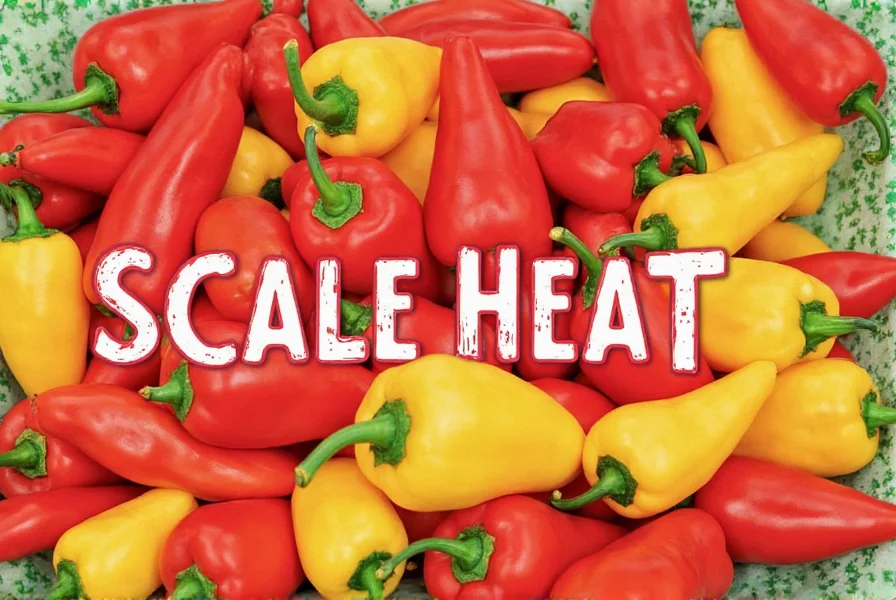

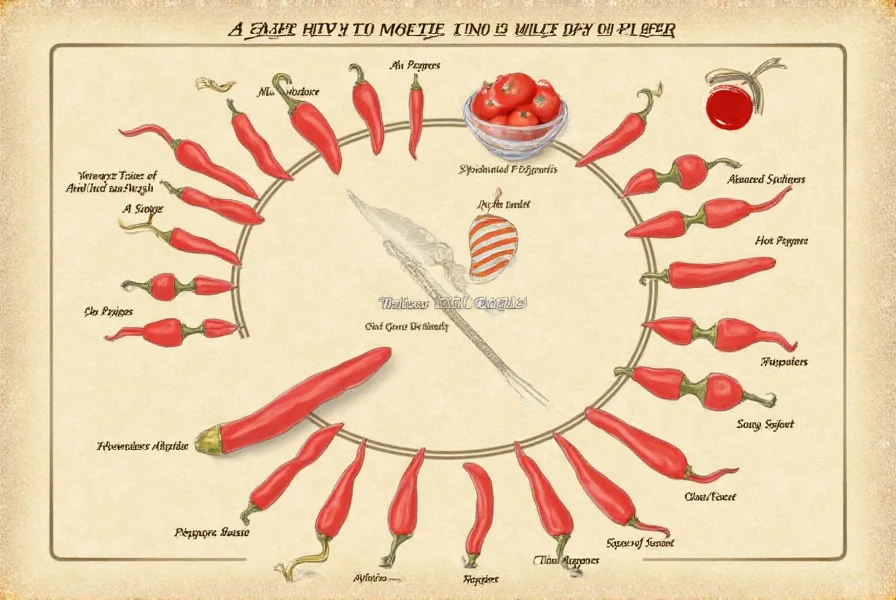









 浙公网安备
33010002000092号
浙公网安备
33010002000092号 浙B2-20120091-4
浙B2-20120091-4